Cell culture plate is often used in cell culture process which has important influence on cell growth and experiment results. As common used cell culture consumable, how much you know about it?
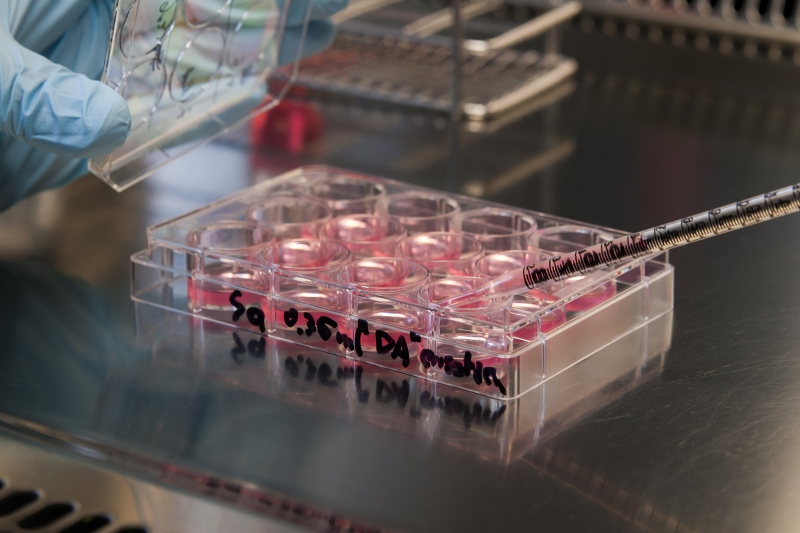
Material
Material of cell culture plate is an important factor, and now there are plastic and glass cell culture plate in the market. Plastic cell culture plate material is polystyrene which is cheap and easy to use. While glass cell culture plate are more transparent and can resist high temperature. User can choose suitable material according to material requirements.
Surface Treatment:
Surface treatment of cell culture plate mainly is TC treatment and Non-TC treatment. To choose
which treatment depends on to culture adherent cells or suspension cells. Cell culture material is Polystyrene which is hydrophobic. Adherent cells need to grow on the surface, so TC treatment cell culture plate is better for adherent cells.
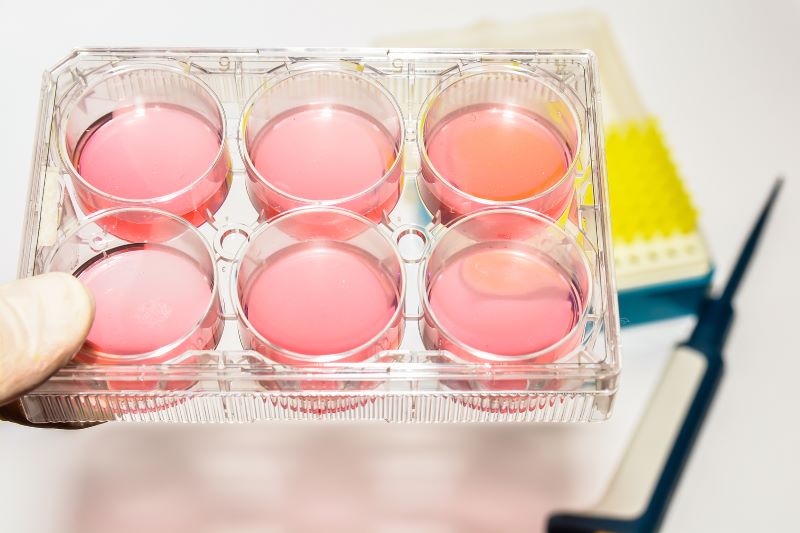
Bottom:
Cell culture plates can be divided into Flat bottom, Round Bottom(U) and V bottom.
Flat Bottom which is most commonly used in laboratories can be used for any type of cells.Round Bottom (U) is mainly for suspension cell culture like immunological experiments require a mix of two different lymphocytes which stimulates by contacting, and the round-bottom (U-shaped) plate can gather the cells by gravity.
Cells in the V-bottom (V-type) plate are in close contact, which is generally used for cell killing and can make the effective target cells close to each other. We can choose according to the experimental requirements.
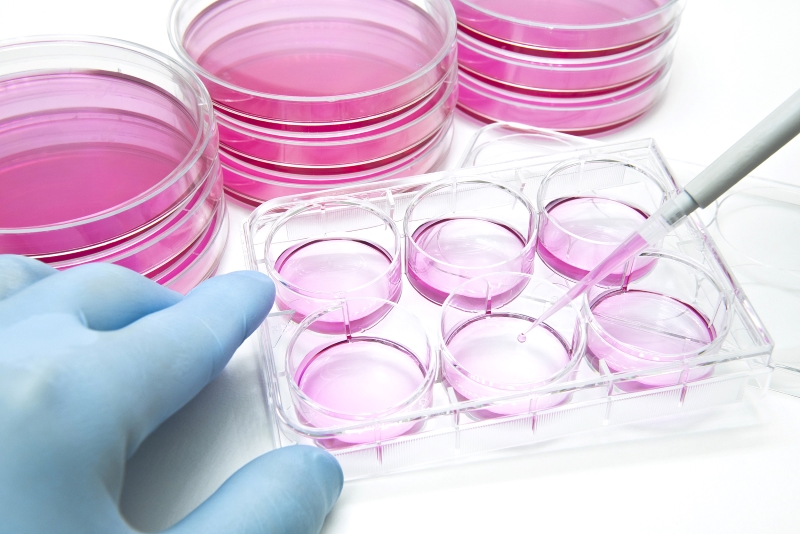
Gas Exchange
Oxygen and Carbon dioxide need to be changed during cell culture process. So gas exchange is an important factor for cell culture. Cell culture material shall have good vents for cell growth and metabolism.
Wells and Pore Size
Usually is 6 wells, 12 wells, 24 wells, 48 wells and 96 wells.
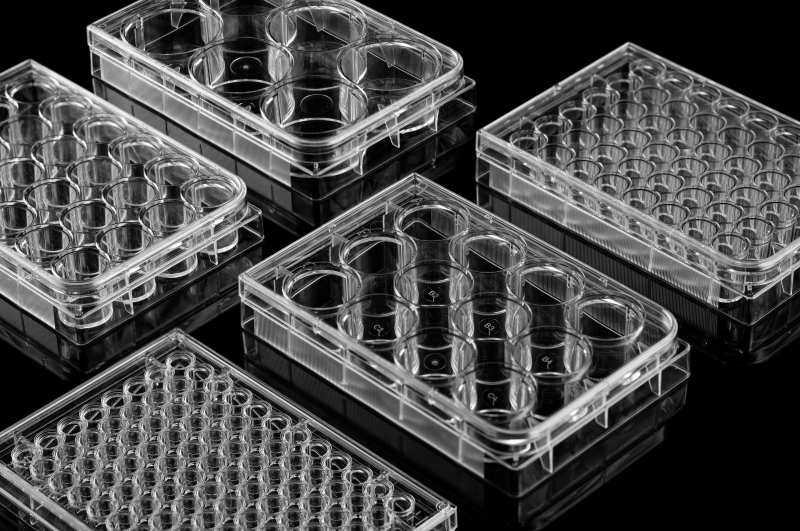
6 Well Plate
6 well plate is most common use size with big well volume and less wells. It is suitable for small volume cell culture. Its well diameter is 3.4cm with each well volume around 3-5mL which is used for cell proliferation and cytology studies.
12 Well Plate
Well size is similar to 6 wells which is suitable for grow more cells. Each well diameter is 1.9cm with a depth of 1.6cm which can fill 1-2.5mL medium. 12 well plate can be used for the propagation of monoclonal or polyclonal cells or for targeted screening and toxicity testing.
24 Well Plate
24 well plate is similar to the 12 well plate with double wells which is more suitable for high-throughput experiments. Each well diameter is 1.2cm with depth of 1cm which can fill 0.5-1.5mL medium. 24well plates are widely used for drug screening, FACS separation, quality control and high-throughput quantification.
96 Well Plate
The 96-well plate is a commonly used high-throughput cell culture plate, which is small but with a large number of wells. Its diameter is only 0.6cm and a depth of 0.8cm for each well which can only fill small volume of culture medium, usually 0.1-0.3mL. The 96 well plate is widely used for enzyme label analysis, antibody screening, immunoprecipitation and other experiments.
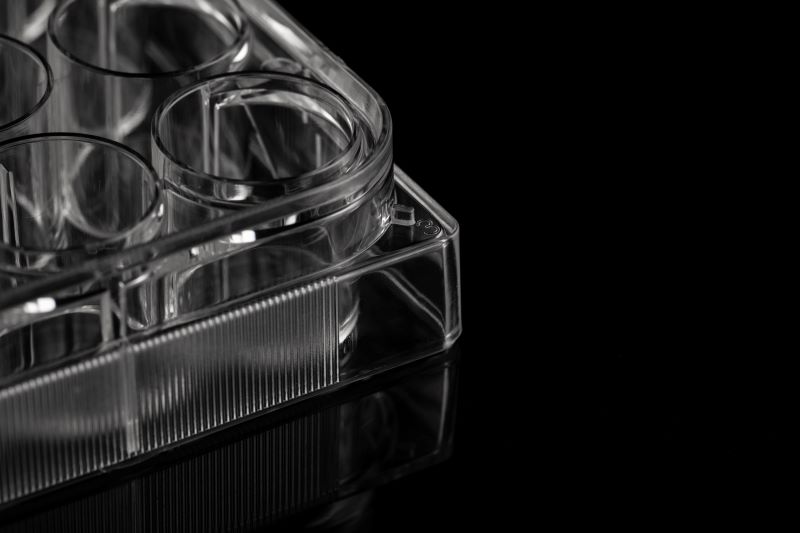
Does the well diameter of the plate affect the results?
The answer is yes, and it will mainly affect the following aspects.
Cell growth and diffusion: Big well size may facilitate cell-to-cell communication and diffusion which is helpful for cell growth and migration. Smaller well sizes may affect the growth rate and morphology of the cells.
Exchange of nutrients and wastes: Well size affects exchange rate of nutrients and wastes. Larger well sizes may allow for faster exchange, helping to maintain the growth environment of the cells. However, this can also lead to rapid depletion of nutrients and waste accumulation.
Cell-cell and cell-matrix interactions: Well size can affect cell-to-cell interactions and between cells and their surroundings like the matrix. These interactions are essential for cell differentiation, proliferation and functional expression.
Cell morphology and structure: In some cases, well size can affect the morphology and internal structure of the cell like the organization of the cytoskeleton.
Adaptability of specific types of cells: Different types of cells may have different adaptations to well size. For example, some cells may require smaller well sizes to maintain their specific morphology and function while others may be better suited to larger we sizes.
Welso is a professional manufacturer of cell culture consumables and instruments worldwide. If
You have any question about our products, welcome to contact us.